|
Books Should Be Free Loyal Books Free Public Domain Audiobooks & eBook Downloads |
|
|
Books Should Be Free Loyal Books Free Public Domain Audiobooks & eBook Downloads |
|
Fiction |
|---|
|
Book type:
Sort by:
View by:
|
By: Charlotte Brontë (1816-1855) | |
|---|---|
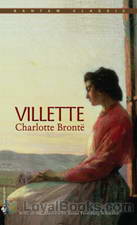 Villette
Villette
Villette was Charlotte Bronte's last published novel. It came out in 1853, just two years before her death in 1855. It is a poignant, strangely lonely and sad work, steeped in conflict between society's demands and personal desires. Set in the fictional town of Villette in France, it is the story of the young and intelligent Lucy Snowe, the narrator in the book. She is described by another character in the book as having “no beauty...no attractive accomplishments...” and strangely seems to lack a personal history or living relatives... | |
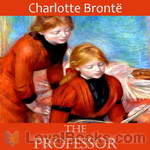 The Professor
The Professor
The book tells the story of a young man named William Crimsworth. It describes his maturation, his loves and his eventual career as a professor at an all-girls’ school. | |
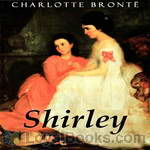 Shirley
Shirley
Shirley is an 1849 social novel by the English novelist Charlotte Brontë. It was Brontë's second published novel after Jane Eyre (originally published under Brontë's pseudonym Currer Bell). The novel is set in Yorkshire in the period 1811–1812, during the industrial depression resulting from the Napoleonic Wars and the War of 1812. The novel is set against a backdrop of the Luddite uprisings in the Yorkshire textile industry. | |
 Emma: A Fragment of a Story
Emma: A Fragment of a Story
Miss Mabel Wilcox, the owner of a newly opened girl's boarding school, meets the wealthy Mr. Conway Fitzgibbon, who drops off his frail daughter to be educated there. When background checks are made, it is discovered that no well-to-do family by the name of Fitzgibbon exists! Supposed Matilda Fitzgibbon is a pseudo-heiress - a fake! What is Miss Wilcox to do?Published posthumously and prefaced by Charlotte Brontë's editor, W. M. Thackeray, these two chapters are the only existing fragments of Emma, the novel Brontë worked on until her untimely death. Since then, it has been "completed" twice by other authors | |
By: Charlotte Dacre | |
|---|---|
 Zofloya
Zofloya
Victoria de Loredani lives the life of a fairy tale princess in Venice. She has everything one might desire and more, until the sinister Count Ardolph enters her world. The Count carries off Victoria's mother in an elopement, and sets off a series of dramatic events that begin to unhinge Victoria's life entirely. Passion, brutality, and murder begin to dominate the separated worlds of Victoria and her brother Leonardo. - Summary by Carolin | |
By: Charlotte Grace O'Brien (1845-1909) | |
|---|---|
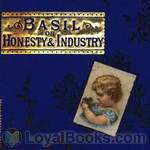 Basil, or, Honesty and Industry
Basil, or, Honesty and Industry
A poor boy discovers the value of honesty and industry. More than that, he discovers the value of his relationship with God. (Introduction by Robert Harder) | |
By: Charlotte Lennox (1730-1804) | |
|---|---|
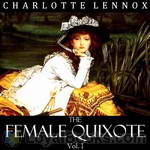 The Female Quixote
The Female Quixote
The novel formally inverts Don Quixote: as the don mistakes himself for the knightly hero of a Romance, so Arabella mistakes herself for the maiden love of a Romance. While the don thinks it his duty to praise the platonically pure damsels he meets (such as the woman he loves), so Arabella believes it is in her power to kill with a look and it is the duty of her lovers to suffer ordeals on her behalf. | |
By: Charlotte M. Brame (1836-1884) | |
|---|---|
 Dora Thorne
Dora Thorne
| |
By: Charlotte M. Higgins | |
|---|---|
 The Angel Children or, Stories from Cloud-Land
The Angel Children or, Stories from Cloud-Land
| |
By: Charlotte M. Yonge (1823-1901) | |
|---|---|
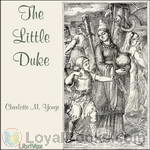 The Little Duke
The Little Duke
The Little Duke by Charlotte M. Yonge is historical fiction based on the the life of Richard, Duke of Normandy. He assumes the title of Duke at only 8 years of age, after his father is murdered. The story first appeared in her magazine, The Monthly Packet, as a serial. | |
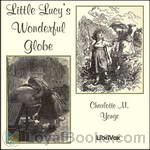 Little Lucy's Wonderful Globe
Little Lucy's Wonderful Globe
Travel with Little Lucy around the globe and learn a little geography and small bits about other cultures. | |
By: Charlotte Maria Tucker (1821-1893) | |
|---|---|
 Ned Franks, or The Christian's Panoply
Ned Franks, or The Christian's Panoply
Ned Franks, a one-armed Christian sailor, returns to his sister's home after several years away at sea. She and her son are not Christians, and are cold toward him, viewing him as a hindrance and expense. By his upright, kind behavior and willingness to work, he soon begins supporting himself and becomes well-liked in the community, especially by the children. Various other characters face and overcome challenges, including a servant girl who breaks a habit of dishonesty and a Jew who is faced with the reality that Jesus Christ is the Messiah... | |
By: Charlotte Mary Yonge (1823-1901) | |
|---|---|
 Heir of Redclyffe
Heir of Redclyffe
The Heir of Redclyffe (1853) was the first of Charlotte M. Yonge's bestselling romantic novels. Its religious tone derives from the High Church background of her family and from her friendship with a leading figure in the Oxford Movement, John Keble, who closely supervised the writing of the book. The germ of its plot was suggested by her friend Marianne Dyson. | |
 Clever Woman of the Family
Clever Woman of the Family
| |
 Two Penniless Princesses
Two Penniless Princesses
| |
 Abbeychurch
Abbeychurch
| |
 The Caged Lion
The Caged Lion
| |
 Unknown to History: a story of the captivity of Mary of Scotland
Unknown to History: a story of the captivity of Mary of Scotland
| |
 The Prince and the Page; a story of the last crusade
The Prince and the Page; a story of the last crusade
| |
 Heartsease, Or, the Brother's Wife
Heartsease, Or, the Brother's Wife
| |
 Countess Kate
Countess Kate
| |
 Hopes and Fears or, scenes from the life of a spinster
Hopes and Fears or, scenes from the life of a spinster
| |
 That Stick
That Stick
| |
 The Carbonels
The Carbonels
| |
 A Modern Telemachus
A Modern Telemachus
| |
 Friarswood Post Office
Friarswood Post Office
| |
 Henrietta's Wish Or, Domineering
Henrietta's Wish Or, Domineering
| |
 Nuttie's Father
Nuttie's Father
| |
 Dynevor Terrace: or, the clue of life — Volume 2
Dynevor Terrace: or, the clue of life — Volume 2
| |
 My Young Alcides
My Young Alcides
| |
 Dynevor Terrace: or, the clue of life — Volume 1
Dynevor Terrace: or, the clue of life — Volume 1
| |
By: Charlotte Perkins Gilman (1860-1935) | |
|---|---|
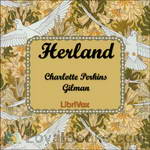 Herland
Herland
Herland is a utopian novel from 1915, written by feminist Charlotte Perkins Gilman. The book describes an isolated society comprised entirely of Aryan women who reproduce via parthenogenesis (asexual reproduction). The result is an ideal social order, free of war, conflict and domination. It first appeared as a serial in Perkin’s monthly magazine Forerunner. | |